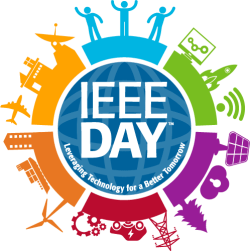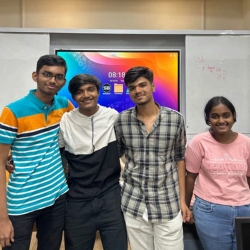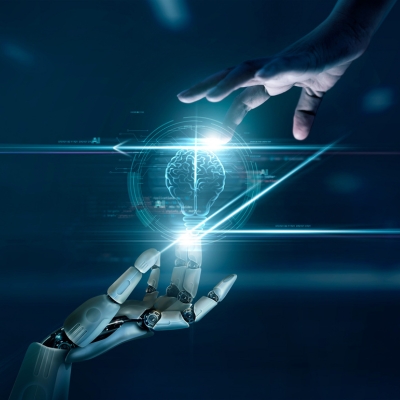Raja Jurdak is a Professor of Distributed Systems and Chair in Applied Data Sciences at Queensland University of Technology, and Director of the Trusted Networks Lab. He received the PhD in information and computer science from the University of California, Irvine. He previously established and led the Distributed Sensing Systems Group at CSIRO’s Data61, where he maintains a visiting scientist role. He also spent time as visiting academic at MIT and Oxford University in 2011 and 2017. His research interests include trust, mobility and energy-efficiency in networks. Prof. Jurdak has published over 210 peer-reviewed publications, including two (co)authored books most recently on blockchain in cyberphysical systems in 2020. His publications have collectively attracted over 9600 citations. He was named among the top 0.9% cited researchers globally for the calendar year 2019, Stanford University in 2020. He serves on the editorial board of Ad Hoc Networks and Nature Scientific Reports, and on the organising and technical program committees of top international conferences, including Percom, ICBC, IPSN, WoWMoM, and ICDCS. He was TPC co-chair of ICBC in 2021. He received the Embark Fellowship in 2006 and the Endeavour Fellowship in 2011. He is a conjoint professor with the University of New South Wales, a senior member of the IEEE, and IEEE Computer Society Distinguished Visitor.
Email: r.jurdak@qut.edu.au
DVP term expires December 2024
Presentations
Blockchain for Cyberphysical Systems
This talk explores how Blockchain (BC) technology has the potential to overcome challenges in the current cyber-physical system (CPS) environment. BC is a timestamp ledger of blocks that is used for storing and sharing data in a distributed manner. BC has attracted attention from practitioners and academics in different disciplines, including law, finance, and computer science, due to its use of distributed structure, immutability and security and privacy. However, applying blockchain in a cyber-physical system (CPS) is not straightforward and involves challenges, including lack of scalability, resource consumption, and delay.
This talk provides a comprehensive study on blockchain for CPS, existing solutions and limitations The key features of blockchain which makes it an attractive solution for CPS are discussed. We describe the fundamental challenges in adopting blockchain for CPS including scalability, delay, and resource consumption. The talk then covers blockchain applications in smart grids, smart vehicles, supply chain; and IoT Data marketplaces.
Blockchain for Distributed Energy Management
Human society is facing the grand challenges of climate change and ever-increasing energy demand. These challenges require us to re-shape the operation patterns of our energy generation, transmission, and consumption patterns. Electrical power systems hence need to be adapted to operate in a more efficient and sustainable manner, for example, accommodate more renewable energy. With this background, the concept of “smart grid” was proposed in the early 21st century, setting up the strategic goal to develop next-generation power systems.
The power distribution network which is central to smart grids is significantly characterized by high penetration of distributed renewable resources, flexible loads, and advanced sensing infra- structures. The transformation from a centralised to distributed energy generation pattern has led to the emergence of energy prosumers (producers-and-consumers), who are capable of generating and consuming energy simultaneously, for example, a building equipped with solar panels. This naturally raises the need for establishing an energy trading mechanism that is secure, maintains participant privacy, and fosters energy economics.
Recently blockchain has attracted tremendous attention as a means to provide a distributed, secure, and anonymous framework for energy trading. Blockchain employs changeable public keys (PKs) to identify users, thus providing a level of anonymity. However, existing solutions suffer from a lack of privacy, processing and packet overheads, and reliance on trusted third parties to secure the trade. This talk describes our solutions to achieve secure, private, and decentralised energy trading using blockchain. Our design includes methods to anonymise routing in energy trading networks, and to anonymously and securely verify the authenticity and location of smart meters within the grid. We also establish how electric vehicles can participate as mobile batteries in the grid as part of the Internet of Mobile Energy.
Mobility and Diffusion in Dynamic Networks
Networks are all around us – from social network relationships to transport and communications networks. They capture the links within our world. These networks can be highly dynamic, where participants move around and their relationships to and interactions with other participants change accordingly. It is therefore very important to capture the movement of network nodes through mobility models in order to be able to forecast the future state of the network. Understanding the node mobility, however, is not enough. Consider a disease spreading through the movement of people, such as COVID-19. While understanding how people move is necessary to understand how the disease spreads, there is also a need to understand the process by which the disease spread and how this process interacts with the people movement process. We refer to this as diffusion modelling, which builds on the underlying mobility modelling. This talk is concerned with diffusion modelling on highly dynamic networks, to cover diffusion processes ranging from disease spread, the spread of computer viruses, or the diffusion of trust in a network.
Energy-Positive Computing for Batteryless IoT
Conventional sensing devices for activity detection are battery-powered. Batteries have limited energy storage capacity and, once depleted, must be replaced or recharged. The use of energy harvesters on sensing nodes can help replenish battery energy. In addition to generating energy, harvesters deliver a signal that is correlated with the device’s context and activity. This signal acts as a virtual sensor of the environment and can be exploited to have simultaneous energy harvesting and sensing. If energy harvesters can deliver more power than needed to support the needs of the IoT platform, we call this energy-positive computing.
In this talk, we design and demonstrate energy-positive computing using solar and kinetic energy harvesters on IoT nodes. We propose Solar-based human Activity Recognition (SolAR), which uses solar cells simultaneously as an activity sensor as well as an energy source. Our key observation is that the power available from a wrist-worn solar cell changes dynamically while a person moves, encoding information about the underlying activity. Our empirical analysis reveals that SolAR improves activity recognition accuracy by up to 8.3 % and harvests more than one order of magnitude higher power compared to its kinetic counterpart. We explore the signal Fusion-based Activity Recog- nition (FusedAR) using both solar and kinetic energy harvesters. We find that the fused signal from both solar and kinetic energy harvesters further enhances the recognition accuracy and generates more energy than required for the entire activity recognition pipeline, which we term as energy-positive activity recognition.










